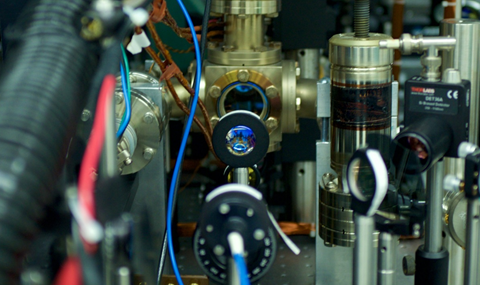Light-pulse atom interferometry is an extremely successful tool in measuring forces and accelerations on neutral atoms, reaching sensitivities of up to 10-10 m/s^2 in state-of-the-art experiments. Gravity gradiometry is traditionally performed by launching two atomic clouds into free-fall trajectories at different heights, and simultaneously measuring the relative acceleration between them using common pi/2-pi-pi/2 interferometeric sequence. We investigate an alternative method to measure gradients using a single atomic cloud, based on the fact that the maximal fringe contrast is achieved for a timing asymmetry between the pulses. By using a cloud with large longitudinal velocity spread, high sensitivity of the contrast function to the gravity gradient may be obtained, while detection of photon backscattering from the interfering atoms allows for a single-shot contrast measurement. This scheme may be used for the construction of simple and compact gravity gradiometers with competitive sensitivity.

Cold atoms and laser physics group

